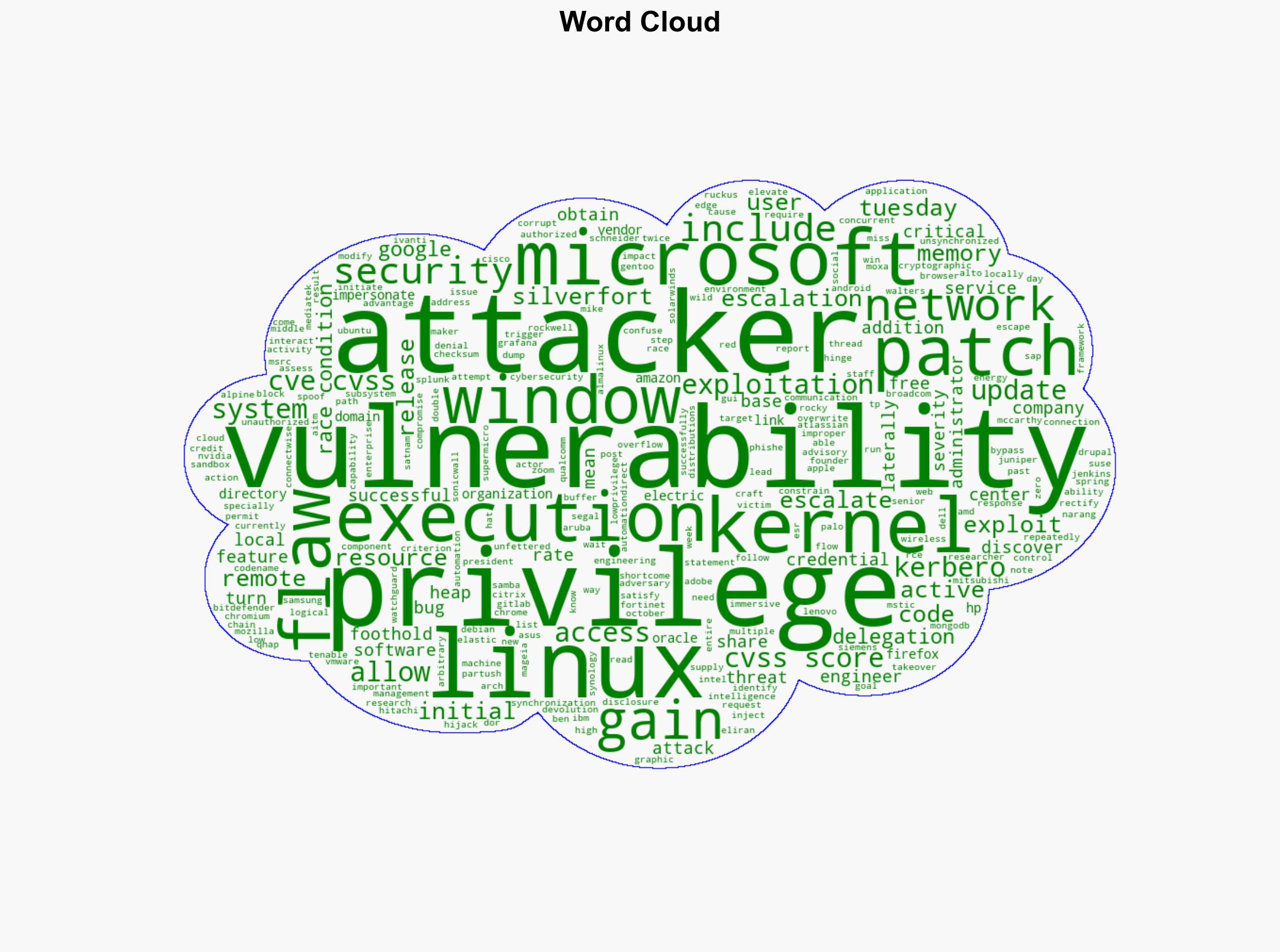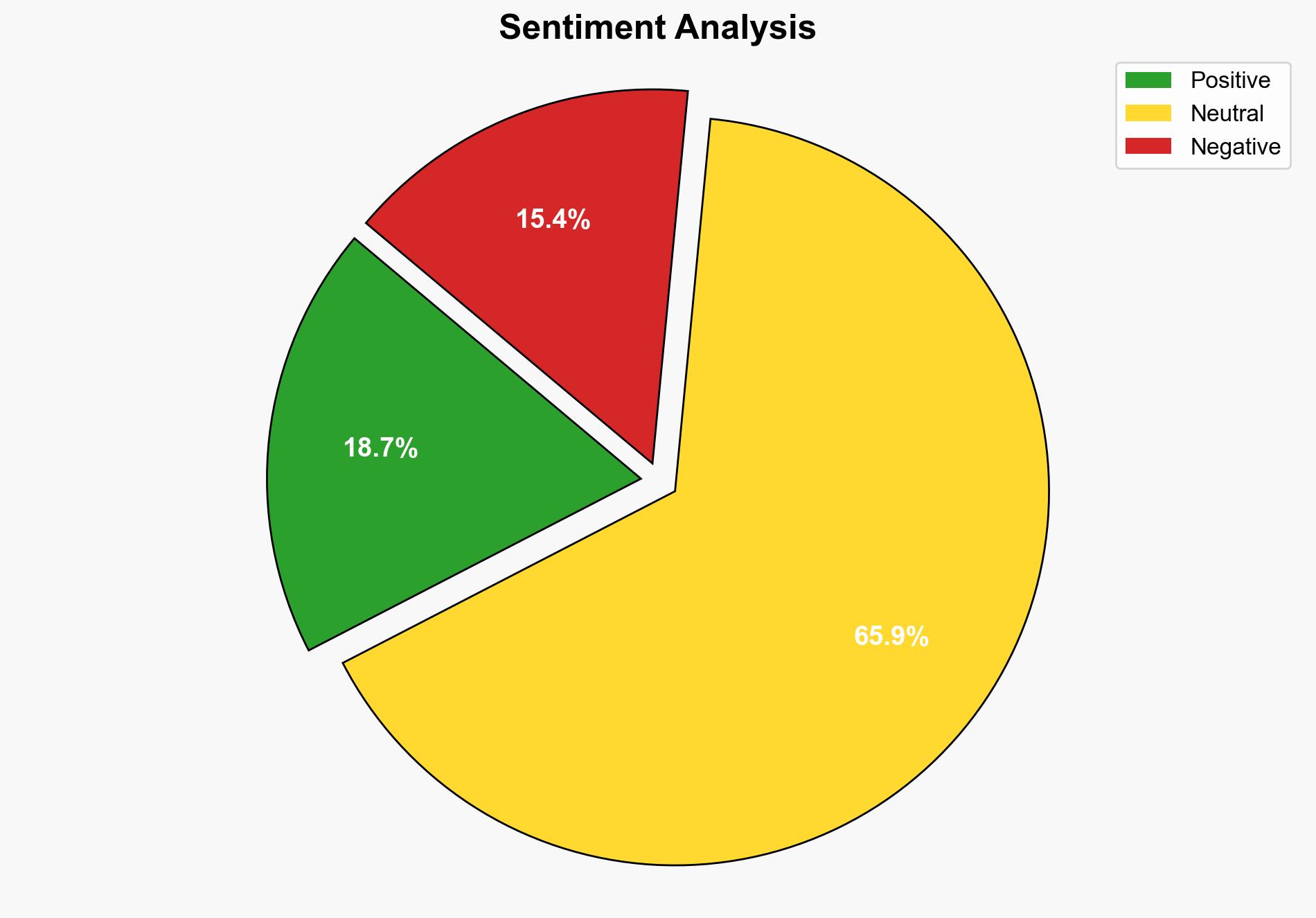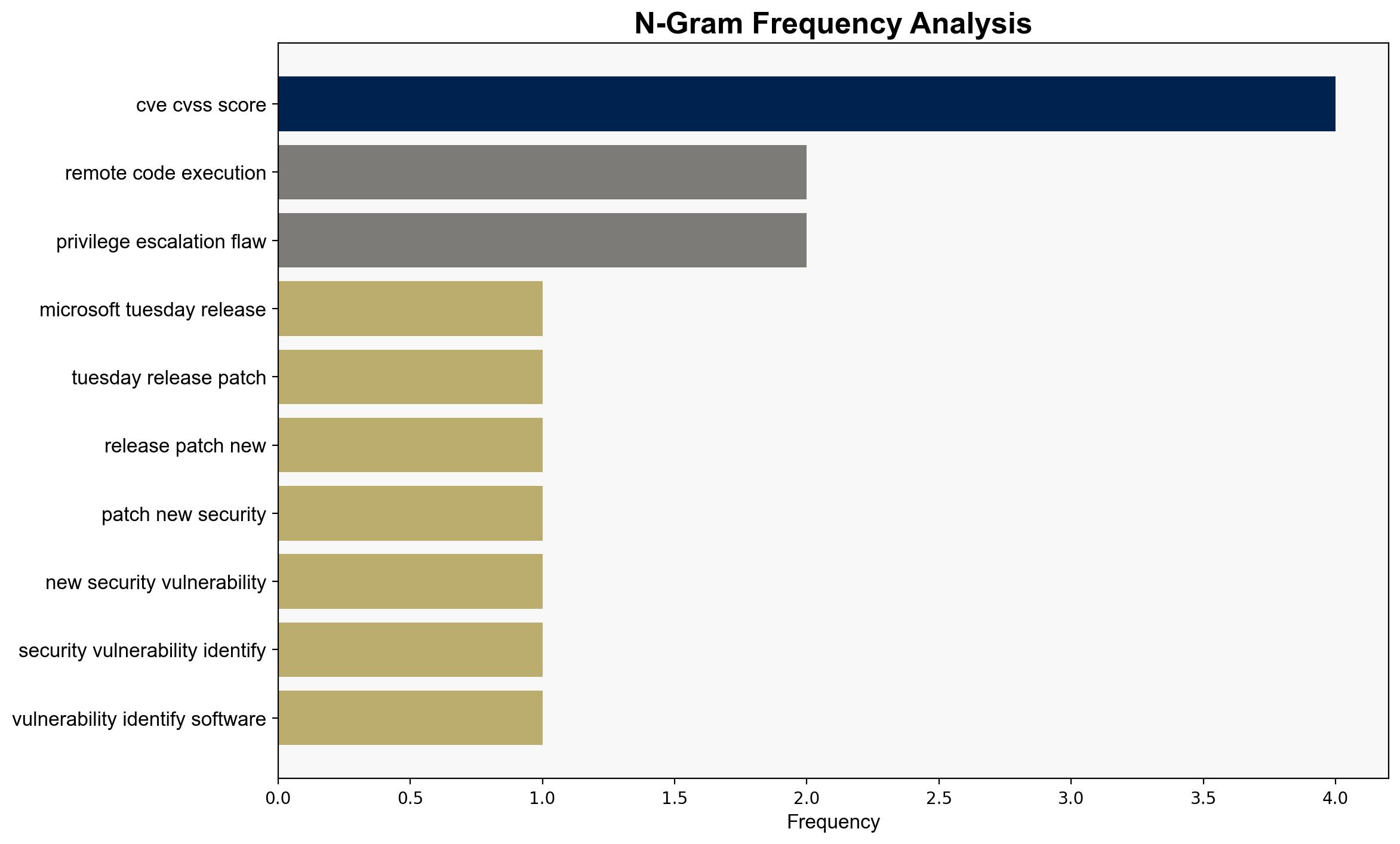Microsoft Fixes 63 Security Flaws Including a Windows Kernel Zero-Day Under Active Attack – Internet
Published on: 2025-11-12
AI-powered OSINT brief from verified open sources. Automated NLP signal extraction with human verification. See our Methodology and Why WorldWideWatchers.
Intelligence Report: Microsoft Fixes 63 Security Flaws Including a Windows Kernel Zero-Day Under Active Attack – Internet
1. BLUF (Bottom Line Up Front)
With a moderate confidence level, the most supported hypothesis is that the active exploitation of the Windows Kernel zero-day vulnerability poses a significant threat to organizations globally, necessitating immediate patch deployment and enhanced monitoring to mitigate potential attacks. Recommended actions include prioritizing patch management and increasing user awareness to prevent exploitation through social engineering.
2. Competing Hypotheses
Hypothesis 1: The active exploitation of the Windows Kernel zero-day vulnerability is primarily targeted at high-value organizations to gain privileged access and conduct espionage or data theft.
Hypothesis 2: The exploitation is opportunistic, targeting a wide range of systems indiscriminately to establish botnets or conduct ransomware attacks.
Assessment: Hypothesis 1 is more likely given the complexity and specificity of the attack vector, which suggests a targeted approach by advanced threat actors seeking valuable information or access. However, the possibility of opportunistic attacks (Hypothesis 2) cannot be entirely ruled out due to the broad applicability of the vulnerability.
3. Key Assumptions and Red Flags
Assumptions: It is assumed that Microsoft’s patches are effective in mitigating the identified vulnerabilities. It is also assumed that organizations will promptly apply these patches.
Red Flags: The rapid discovery and exploitation of the zero-day vulnerability suggest potential insider knowledge or advanced reconnaissance capabilities by threat actors.
Deception Indicators: The possibility of false flag operations where the true origin of the attacks is obfuscated to mislead attribution efforts.
4. Implications and Strategic Risks
The exploitation of these vulnerabilities could lead to significant cyber risks, including unauthorized access to sensitive data, disruption of critical services, and financial losses. Politically, state-sponsored actors exploiting these vulnerabilities could escalate tensions between nations. Economically, widespread exploitation could lead to increased costs for cybersecurity measures and potential market instability.
5. Recommendations and Outlook
- Actionable Steps: Organizations should immediately apply Microsoft’s patches, enhance monitoring for unusual activities, and conduct user training to recognize phishing attempts.
- Best Scenario: Rapid patch deployment and increased vigilance prevent any significant exploitation of the vulnerabilities.
- Worst Scenario: Delayed patching leads to widespread exploitation, resulting in major data breaches and operational disruptions.
- Most-likely Scenario: Some organizations will experience targeted attacks, but overall impact will be mitigated through timely patching and response efforts.
6. Key Individuals and Entities
Ben McCarthy, Mike Walters, Satnam Narang, Eliran Partush, Dor Segal.
7. Thematic Tags
Cybersecurity
Structured Analytic Techniques Applied
- Adversarial Threat Simulation: Model and simulate actions of cyber adversaries to anticipate vulnerabilities and improve resilience.
- Indicators Development: Detect and monitor behavioral or technical anomalies across systems for early threat detection.
- Bayesian Scenario Modeling: Quantify uncertainty and predict cyberattack pathways using probabilistic inference.
- Network Influence Mapping: Map influence relationships to assess actor impact.
Explore more:
Cybersecurity Briefs ·
Daily Summary ·
Methodology





